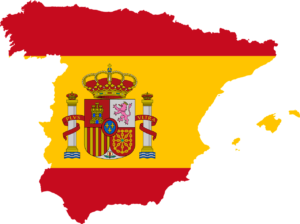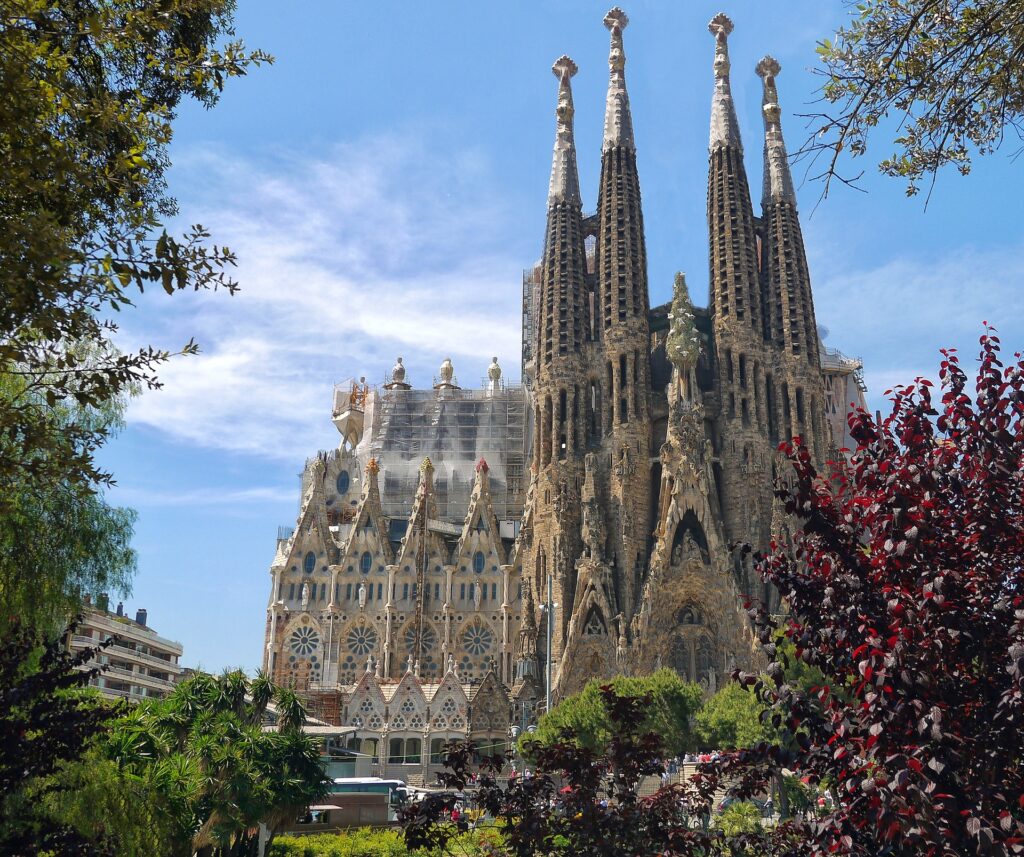Spain
Spain is located on the Iberian Peninsula in southwestern Europe. Its mainland is bordered to the south and east by the Mediterranean Sea except for a small land boundary with Gibraltar; to the north and northeast by France and Andorra and to the west and northwest by Portugal. It is one of only three countries to have both Atlantic and Mediterranean coastlines.
Spanish territories also includes the Balearic Islands in the Mediterranean and the Canary Islands in the Atlantic Ocean off the African Coast. These can easily be incorporated into your Spanish holiday.

Overview
It is the second-largest country in Western Europe and the fifth-largest country in Europe.
As a tourist destination, Spain is very important for many reasons. It is the 4th most visited country in the world and has 13 cities recognized by UNESCO as World Heritage sites. One consideration is the all-year-round mild climate. Other attractions are its many beautiful sandy beaches, its art, culture and architecture all to be experienced in many of the major Spanish cities.
Popular Areas
Barcelona offers wide and attractive boulevards and streets and also proximity to and influence of the sea. It is very different from other Spanish cities. Las Ramblas is one of the first places to visit to get a feel for Barcelona on Spain holidays, essentially a boulevard which cuts through the centre of the city and is a major landmark. Important buildings on and nearby include the unique and historic opera house, the Gran Teatre del Liceu, and the Placa Reial (Royal Square) which is a lively 19th Century square with street lamps designed by Antoni Gaudi, the Christopher Columbus Monument and the old port of Barcelona.
Bilbao is the largest city in the Basque region of Spain and as such, has a different vibe to it and is known for the elegance of its buildings, streets, and parks. The number one major attraction is the Guggenheim Museum designed by renowned architect, Frank Gehry with its unique design. The Casco Viejo (Old Quarter), Bilbao’s most colorful neighborhood full of charming streets house the Gothic Santiago Cathedral.
San Sebastian is a stunning and sophisticated, Internationally-renowned city and resort in the Basque region of Spain with one of the best beaches in Europe, ideal on trips to Spain. It is also known as the culinary capital of Spain with around 30 Michelin-rated restaurants. There are also some lovely old churches from the 16th and 18th Centuries and a 16th Century monastery.
Malaga has a lively nightlife, museums and exceptional seafood restaurants all located along wide boulevards, swaying palm trees and beautiful beaches. In the historic center is La Alcazaba, a fortress dating back to 1065. Pablo Picasso is the city’s most famous son and there are several galleries showing his work including the Museum of Fine Arts. Malaga, as well as being a cultural capital, is a great place to eat out on a holiday in Spain.
Andalusia is a unique region in Spain, like no other part of the country offering a glimpse into a colourful and vibrant historical era. Andalusia may be known as the “home of the Flamenco,” but its real legacy is the mixture of cultural influences left by 3 religions – Islam, Christianity, and Judaism. There are three Andalusian cities worth visiting individually.
- Granada is the site of the Alhambra Palace, a UNESCO World Heritage Site and an extensive series of beautiful palaces and gardens built as far back as the 14th Century.
- Seville has three UNESCO World Heritage Sites – the Alcazar, built initially in the 1300s still used as a royal palace, Seville Cathedral, the third-largest in the world after the Vatican in Rome and St. Paul’s in London and the General Archive of the Indies.
- The Great Mosque of Cordoba, also known as the Mezquita is one of the world’s largest and greatest Islamic buildings a symbol of the importance and sophistication of the Islamic period and a breathtakingly beautiful building inside and out.

Weather
As a result of the geography of Spain, the country experiences different climates and temperatures. Northern Spain encounters somewhat colder temperatures, while the coastal regions, as well as southern Spain, experience mild temperatures and longer days. The central part of the country, located on the plateau, enjoys hot and dry weather.
Like many places in North America, Spain also has four seasons. Winter, from December to mid-March, is often cold but stays sunny which allows days to be dry. It does snow in Spain but tends not to accumulate. Spring, from mid-March to late May, enjoys warmer temperatures but visitors may experience rain. Despite this, spring is a great time to visit. Summer, from June to August, is characterized by heat for the whole season with temperatures regularly reaching 45˚C (115˚F). Finally, autumn, from September to November, is also considered a nice time to come to Spain. Warmer temperatures linger into October but it is not as hot as August, making days more pleasant.
Best TIme To Visit
The best time to travel on a Spain vacation is during springtime and also in the fall. The best months are April, May, June, September and October.
July and August are very hot, especially in cities such as Seville, Cordoba and Madrid. Madrid has a dry heat as opposed to the other cities.
The Atlantic Coast including San Sebastian has the most rain, especially in October and November. The best time to be here is in the summer.
Barcelona and the Costa Brava are slightly cooler than other major cities and the best time to visit is between May and September.
In the winter, the Costa del Sol has the warmest temperatures followed by the Balearic Islands on trips to Spain. In winter, temperatures can be cold in and around mountainous areas. This includes Granada.
There are special times to be in Spain. Holy Week in Seville has the famous Semana Santa celebration when masked processions and large floats parade down the streets. The coastal town of Cadiz has one of the largest Carnival holidays in the world every year. There is the Tomatina on the last Wednesday of August each year in the town of Bunol near Valencia. This is a city-wide food fight involving locals and foreigners who throw tomatoes at one another. The legendary Running of the Bulls is staged in the northern town of Pamplona each July.
Transportation
Public transportation with buses is the most common and most economical way to get around in the many major cities of Spain. Train travel between the major cities is extremely convenient and reliable.
Self-driving around Spain is also a common option for visitors and tourists. In order to drive in Spain, North American visitors must possess an international driver's license. Driving is done on the right side of the road in Spain. Uber transportation services are available in Madrid, Malaga, Torremolinos, Benalmádena, Fuengirola, Mijas, Marbella, Seville, Córdoba and Granada.
Many clients also look forward to taking the ferry from the South of Spain over to Morocco for those interested in visiting the country for a few days.
LANGUAGE
The national language of Spain is Spanish. However many locals are able to speak English in order to easily communicate with tourists and visitors. Many locals are well-spoken in the following languages as well: Galician-Portuguese, Spanish (Castilian), Basque, Catalan and Occitan (aranès).
The official languages are Spanish (Castillian), Basque, and Catalan.
Currency
Euro (EUR) is the main currency used in Spain. Visa and Mastercard credit cards are also accepted however it is recommended to call ahead and advise the credit card company of travel plans to avoid hassle while on vacation.
Tipping is expected on top of a fluxuating Value Added Tax. "Rounding up" is common.
Visa
Canadian and American citizens do not require a visa for stays up to 90 days.




